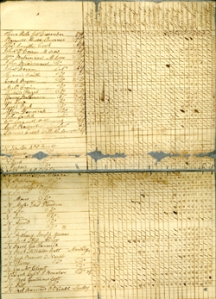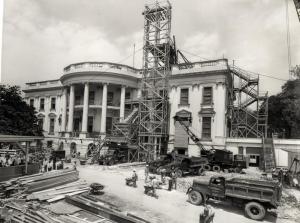Now this is something that I really do love. I like them fried, boiled, broiled, steamed, grilled, etc you get the picture. When I first started writing this blog I told Budget Blogger Meg [@CallMeHoppe] about it. I got that she was kind of disturbed when she said, “This isn’t going to be some gross homage to the old adage, ‘Do you know what’s actually in there?!’ is it?” When I told her that there was nothing gross, she agreed to read it after some “it better not be’s” So, to ask the age old question, hold the gross:
What are hot dogs made from?
Are hot dogs made of pork, beef, or something else? What are hot dogs made of? Frankfurter content is regulated by law in the United States. Traditional hot dogs are made of beef, pork, veal, chicken or turkey. They are available with or without skins and may contain up to 30% fat and 10% added water. For vegetarians, there are tofu hot dogs.
Hot dog sizes range from about 2 inches (cocktail wieners) up to the famous foot-long hot dogs popular at sporting events. The most popular hot dog size is the standard 6-inch length usually sold in packages of ten.
Hot Dog Terms Regulated by Law
–Beef or all-beef: Contains only beef with no soybean protein or dry milk solid fillers added.
–Kosher: All-beef, usually heavily seasoned with garlic.
–Meat: A mixture of pork and beef, usually 40% pork and 60% beef with no fillers.
–Frankfurter: May contain up to 3.5 percent fillers and made from a combination of meats.
Let’s share some hot dog recipes and their origins
–Chicago dogs: a steamed, boiled or grilled – but never broiled – all-beef
hot dog on a poppy seed bun, originating from the city of Chicago, Illinois. The hot dog is topped with mustard, onion, sweet pickle relish (usually a dyed neon green variety called “Nuclear Relish”), a dill pickle spear, tomato slices or wedges, pickled sport peppers, and a dash of celery salt; sometimes, but not always, cucumber slices. [Not to be biased as a Chicagoan, but these are the BEST hot dogs you could ever hope to eat!!!]
–Kansas City dogs: Sauerkraut and melted Swiss cheese on a sesame seed bun.
–New York City dogs: Steamed onions and pale yellow mustard sauce.
–Coney Island dogs: Topped with a spicy meat mixture.
–Southern slaw dogs: Served with coleslaw on top.
–Corn dogs: Placed on a stick, dipped in corn bread batter, and deep-fried.
–Tex-Mex dogs: Topped with salsa, Monterey Jack cheese, and chopped jalapenos.
–Pigs in a Blanket: Wrapped in pastry and baked.
–Baltimore Frizzled: Split and deep-fried.
–Lillies: Short for Lilliputians (from the Jonathan Swift novel Gulliver’s Travels), these are about half the size of a man’s thumb, also commonly called cocktail-size, and usually served as an appetizer in a sauce.
Hot Dogs Around the World
The popularity of the American hot dog has spread worldwide. In Russia, where they are known as Sosiska, Russians prefer their dogs spicier, so those exported to Russia generally contain a lot more garlic. Whereas, in China, where hot dogs are known as Rouchang, a fully cooked, cold hot dog wrapped in red plastic is eaten like a popsicle, slowly peeling the red plastic down as it is consumed or warmed on a stick with no condiment embellishment. However, no other country to date can keep up with Americans who consume over 20 billion hot dogs a year [we have to win at everything we do!]
Where did the term “hot dog” come from?
Although the history of sausage goes back a long way, hot dogs are as American as apple pie. There is no certain etiology of the term hot dog, but two theories are the most prominent.
The popularity of the term hot dog is generally attributed to sports cartoonist T. A. “Tad” Dorgan, who caricatured German figures as dachshund dogs just after the turn of the 19th century. His talking sausage cartoons generally denigrated the cheap wieners sold at Coney Island, crassly suggesting they contained dog meat. It was such bad publicity that in 1913, the Chamber of Commerce actually banned use of the term “hog dog” from signs on Coney Island.
The term actually first appeared in print in the Oxford English Dictionary in 1900. German Americans brought us wienerwurst, German for Vienna sausage, which eventually became shortened to wiener. Other German immigrants referred to smoked sausages as bundewurst, which is German for dog sausage. By the late 1920’s, weinie roasts became the rage, with guests bringing their own hot dogs to roast over an open fire.
Credit for putting the hot dog into a warm bun and topping it with various condiments goes to Harry Magely, catering director of New York City’s Polo Grounds, who reportedly instructed his vendors to cry out, “Red hots! Get your red hots!” Also credited for the idea of warm buns is Charles Feltman, of Feltman’s Gardens in Coney Island amusement park. Corn dogs were introduced in 1942 at the Texas State Fair, created by Texan Neil Fletcher.
Now that we know how wonderful my hot dogs are let’s stop reading here and go and have a wonderful hot dog experience with everything on it!!






 The White House could not have been completed without European artisans and immigrant laborers. Scottish stoneworkers raised the sandstone walls. Crafstmen from Scotland also carved the rose and garland ornaments above the north entrance (photo) and the scalloped patterns beneath the window pediments. Irish and Italian immigrants did brick and plasterwork. laster, Italian artisans carved the decorative stonework on the White House porticoes.
The White House could not have been completed without European artisans and immigrant laborers. Scottish stoneworkers raised the sandstone walls. Crafstmen from Scotland also carved the rose and garland ornaments above the north entrance (photo) and the scalloped patterns beneath the window pediments. Irish and Italian immigrants did brick and plasterwork. laster, Italian artisans carved the decorative stonework on the White House porticoes.
